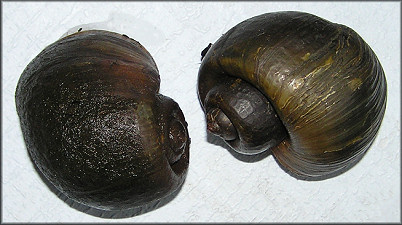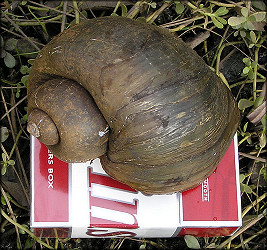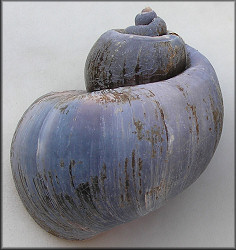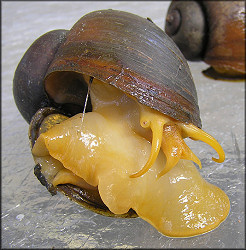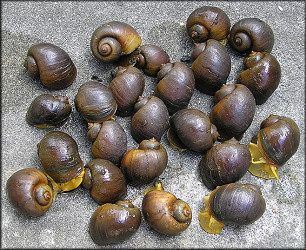|
Pomacea canaliculata (Lamarck, 1822) At Baker Skinner Park | Praver Drive Page Four |
|
|
[Click on the images below for a higher resolution version.] |
|
|
Species Variability |
|
|
2005 Finale |
|
| As the temperatures became progressively cooler with the onset of winter, the Channeled Apple Snail population became less active, and when they could be located, were usually found partially buried in the substrate. On the 17th and 18th of December, Duval County received over three inches of precipitation within a 24 hour period which had a significant impact on the snails' habitat. The preferred habitat in the muddy, slow-flowing, weed-choked drainage ditch south of the dam/retention pond was scoured clean by the sudden rush of run-off, which caused the water level to rise as much as six feet. A good portion of the vegetation from the ditch (and presumably a good portion of the resident snail population) was located about 1/4 mile downstream from the concrete box culvert at an acute bend in the ditch. This impressive tightly-packed conglomeration was about six feet high, 10 feet wide, and 20 feet long. Despite this barrier/dam of sorts, the ditch further downstream was also scoured clean by the flood and that vegetation (and no doubt the resident snails) was washed about 1/4 mile further downstream to a second very large vegetation conglomeration at a box culvert at a residential street. A third much smaller vegetation conglomeration was also found at the next concrete box culvert several hundred yards further downstream. It appears likely that a significant number of the large population of Channeled Apple Snails in the ditch perished during this significant weather event - an event unmatched during the preceding five months. However, even more likely is the possibility that the range of the snails has been extended significantly downstream when one considers not only the large resident adult population but the many thousands of juveniles which hatched over the summer. Further investigation during 2006, after the return of warmer weather, will be necessary to assess the long term effects. | |
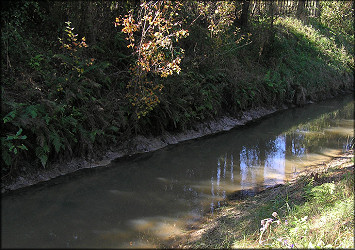 |
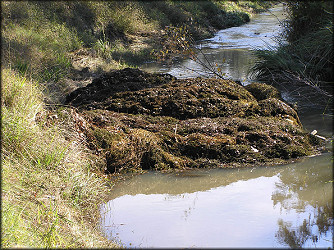 |
| Scoured Bottom Of The Drainage Ditch (12/20/2005) | Ditch Aquatic Vegetation Conglomoration (12/20/2005) |
| Drainage Ditch Before And After The Heavy Rain | Pomacea canaliculata Foraging On Ditch Bank |
